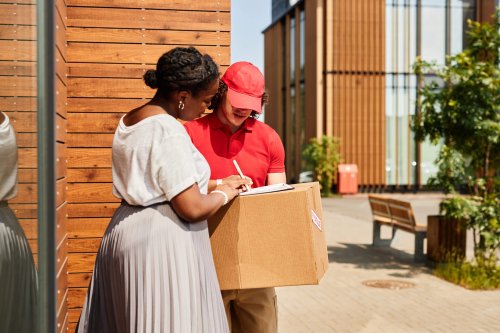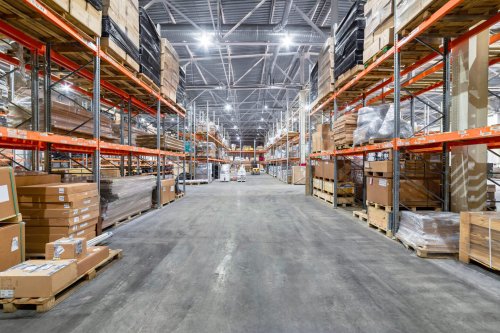From Order to Doorstep: What Actually Happens in the Fulfillment Process?
In the fast-paced world of eCommerce and retail, customers expect quick, accurate, and seamless deliveries. But what really happens after they click “Buy Now” and “Place Order”?
While the front-end shopping experience is smooth and intuitive, the back-end logistics operation is a complex orchestration of systems, technology, and teamwork. For businesses working with a third-party logistics provider (3PL), understanding the fulfillment process from order to doorstep is key to optimizing customer satisfaction and business growth.
Let’s pull back the curtain on what happens behind the scenes.

Step 1: Order is Received
Once a customer places an order on your website, marketplace, or other sales channel, that data is instantly transmitted to your 3PL’s warehouse management system (WMS). Modern fulfillment providers integrate directly with eCommerce platforms like Shopify, Amazon, WooCommerce, and TikTok Shop to ensure real-time updates.
This initial step triggers the fulfillment process, allowing the warehouse to view the order, identify the items needed, and begin processing without delay. Custom BackOffice Solutions, for example, provides seamless integration and order syncing, eliminating manual data entry and reducing the chance of errors.
Step 2: Inventory is Located
Once the order hits the system, the WMS tells warehouse staff exactly where each item is stored within the facility. Inventory is organized with barcode scanning, SKU tracking, and efficient slotting strategies. This minimizes travel time and helps the picker find the product quickly and accurately by utilizing their mobile scanning device.
Fulfillment centers maintain high inventory accuracy through cycle counting, real-time updates, and proactive reordering alerts. Keeping stock levels accurate not only prevents overselling but also ensures fast order turnaround.
Step 3: Order is Picked
“Picking” refers to the process of locating and retrieving the items needed for the order. Depending on the facility’s size and order volume, picking may be done in batches, waves, or zones. For example, orders may be grouped together to optimize the picker’s path through the warehouse.
Pickers use handheld barcode scanners to confirm each item, reducing the chance of mistakes. Accuracy at this stage is critical to prevent returns, refunds, and customer frustration.
Step 4: Items are Packed
After the order is picked, it moves to the packing station. At this stage, packers select the appropriate box or envelope size, add protective materials like bubble wrap or kraft paper, and insert any marketing collateral, such as coupons, thank-you cards, or instructions.
Packaging isn’t just about protection—it’s also an opportunity to reinforce your brand. Some 3PLs offer custom packaging solutions, allowing businesses to include branded boxes, labels, and tissue paper for a memorable unboxing experience.
At CBO Solutions, clients can choose between eco-friendly, branded, or standard packaging options. Whether you’re shipping luxury skincare or yoga mats, the packaging is tailored to fit both the product and the customer expectation.
Step 5: Shipping Label is Printed
Once packed, the order is weighed and measured, and a shipping label is printed using your 3PL’s system. Carriers like USPS, UPS, FedEx, and DHL are compared in real-time to determine the most cost-effective and timely delivery method based on the shipping destination and customer preferences.
Your fulfillment partner may use rate shopping software to optimize shipping costs—an essential service for small businesses looking to stay competitive with fast and free shipping.
Step 6: Carrier Pick-Up and In-Transit Tracking
At the end of each day (or multiple times per day), carriers arrive at the fulfillment center to pick up outbound packages. From there, orders enter the shipping network and are tracked via a unique tracking number shared with both the business and the customer.
Most 3PLs offer dashboard tools or direct integration with your eCommerce platform so customers can receive tracking updates automatically. CBO Solutions ensures sellers and buyers alike stay informed throughout the journey.
Step 7: Delivery and Customer Satisfaction
The final destination: your customer’s doorstep. At this point, your job may seem done, but the post-purchase experience still matters. If a customer has a question or issue, it’s critical to have transparent support and easy returns processing in place.
Many 3PLs (including Custom BackOffice Solutions) offer reverse logistics support, allowing you to accept returns, restock products, or dispose of damaged items as needed.

Why The Fulfillment Process Matters
Every step of the fulfillment process affects the customer experience. Speed, accuracy, and presentation are what turn first-time buyers into loyal fans. By understanding each phase, you can better evaluate the performance of your 3PL, communicate expectations, and scale your operations more confidently.
Working with a fulfillment partner like CBO Solutions gives growing brands the tools and support to deliver at the level of much larger companies. With expert inventory management, streamlined operations, and customizable services, small businesses can keep up with high demand and rising customer expectations.
Final Thoughts
From the moment a customer clicks “Buy Now” to the minute their package arrives, the fulfillment process is a key driver of business success. Partnering with the right 3PL helps ensure that every step—from order processing to shipping—is executed with precision, speed, and care.
If you’re looking to improve your fulfillment workflows or explore 3PL services for the first time, consider what goes on behind the scenes. It might just be the most important part of your customer journey.
